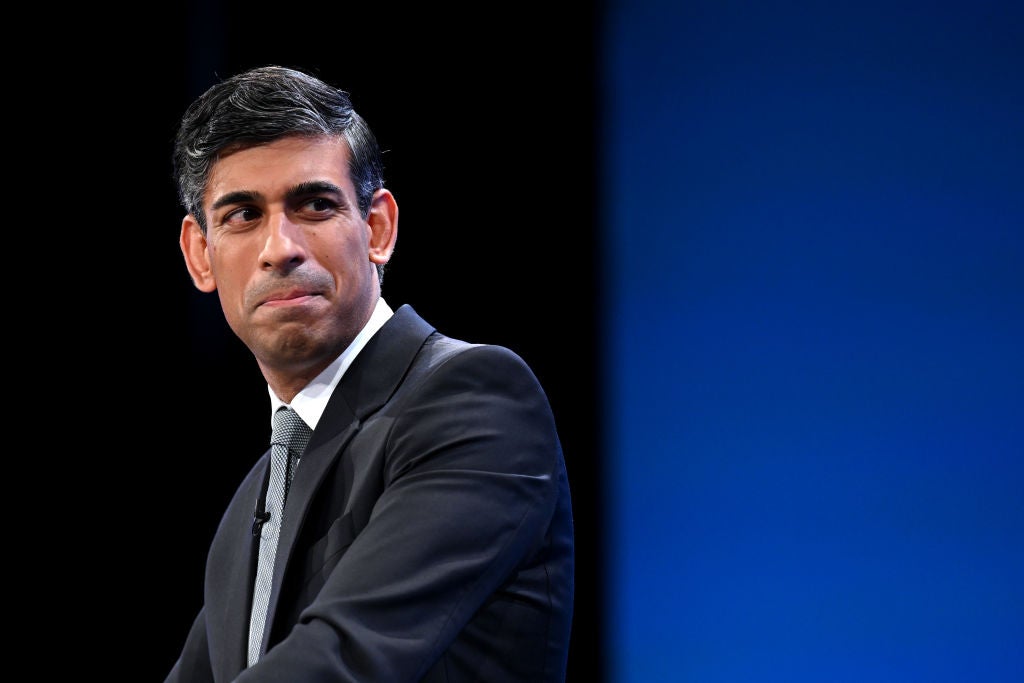
Announcements at the 2023 UK Conservative Party Conference – widely cited as an policy indicator for the next UK general election – were focused largely on healthcare (with a new smoking ban for young people); education (with English and Maths compulsory up to 18); and scrapping half of the UK’s proposed high-speed rail network.
Relatively little was said on climate: Prime Minister Rishi Sunak only mentioned in passing that the UK would seek a “pragmatic, proportionate and realistic” route to net zero at the opening of the policy section of his keynote address.
In truth, little needed to be said. Sunak had already made clear two weeks earlier that the UK would be moving net zero by 2050 down the list of policy priorities, despite ostensibly retaining the goal. At a press conference, he announced a delay in the ban on the sale of new petrol and diesel cars from 2030 to 2035, and a slowing of the phase-out of fossil fuel boilers.
In an open letter to Sunak, experts from top universities across the UK and abroad countered that accelerating net zero would create jobs and attract investment. They called the PM’s move “an example of the very kind of short-termism that has led to the UK’s current economic malaise”.
“Rishi Sunak is using net zero as a political football,” said Holly Brazier Tope, politics lead at think tank Green Alliance, in an interview with Energy Monitor. Most businesses and party members at the Conservative Party Conference “are tearing their hair out that there has been this sudden nosedive in the rhetoric around net zero, which makes the UK look like an unstable investment environment”, she added.
Criticism from green groups of the government’s new strategy is to be expected, but Green Alliance has also crunched the numbers over what different policy packages actually mean.

US Tariffs are shifting - will you react or anticipate?
Don’t let policy changes catch you off guard. Stay proactive with real-time data and expert analysis.
By GlobalDataGreen Alliance’s Net Zero Policy Tracker analyses the gap between confirmed policy and what would be required for net zero by 2050, according to the UK’s five-yearly carbon budgets.
At the start of 2023, there was a 13% share of required emissions cuts in the 2028–32 carbon budget that was not covered by policy. Following the government’s so-called Energy Security Day in March – which saw 2,800 pages of new energy and climate policy – the share of emissions cuts not covered by policy grew to 15%.
Since Sunak’s latest speech in March, the gap has grown to 21%: a near-doubling of the gap that existed at the start of the year.
Keep up with Energy Monitor: Subscribe to our weekly newsletter“The Prime Minister delayed vital policies that would have lowered energy bills, increased UK energy security, and played a critical role in creating a green and growing economy,” said Chris Venables, Green Alliance’s deputy director of politics and partnerships, in a statement following Sunak’s speech. “This represents a deeply alarming pivot that has undermined business confidence, and put at serious risk the hard-won, cross-party and evidence-based approach we have had to actually reaching our legally binding net-zero targets.”
Green Alliance calculates that delaying the transition to electric vehicles will raise the cost of driving by £10bn ($12.3bn) over the next decade, while some 2.5 million households will pay more for their heating because of the prime minister’s go-slow approach to phasing out gas boilers.
Green Alliance’s Net Zero Policy Tracker analyses key sectors that need to decarbonise in order to reach its headline figure. Its latest analysis shows that the power sector is the only sector currently with most of the emissions cuts it needs to hit policy targets.
When faced with criticism from green groups, the UK Government is always quick to point out the UK’s historic emissions reductions record. In his September speech, for example, Sunak pointed out that the UK has reduced its emissions faster than any other G7 nation since 1990, with a 50% cut, compared with 22% in France and no change in the US.
Much of this success comes down to the pace at which the UK closed down its coal-fired power stations, as well as the pace at which the UK built offshore wind farms. Until 2021, the UK had the most offshore wind capacity in the world (just over 10GW at the time; a figure overtaken by China, which managed to build a vast 17GW of wind capacity in 2021 alone).
However, data shows that the UK’s renewables success story is now a thing of the past. Between 2010 and 2015, annual renewable capacity growth stood at 25% or more per year. By 2019, this figure had fallen to 2%, and in 2022 – the most recent year for which the International Renewable Energy Agency has data – capacity growth remained at only 7%, below that of the US, Europe and the world.
The UK’s renewable industry problems look set to continue, faced with high inflation, skills shortages and local opposition to renewable power infrastructure and transmission systems.
At the start of September, the UK’s latest contracts-for-difference (CfD) renewable energy auction failed to attract any offshore wind bidders, with industry complaining that the government had set a maximum power price that was too low, and unreflective of how the cost of manufacturing and installing a wind turbine has increased.



